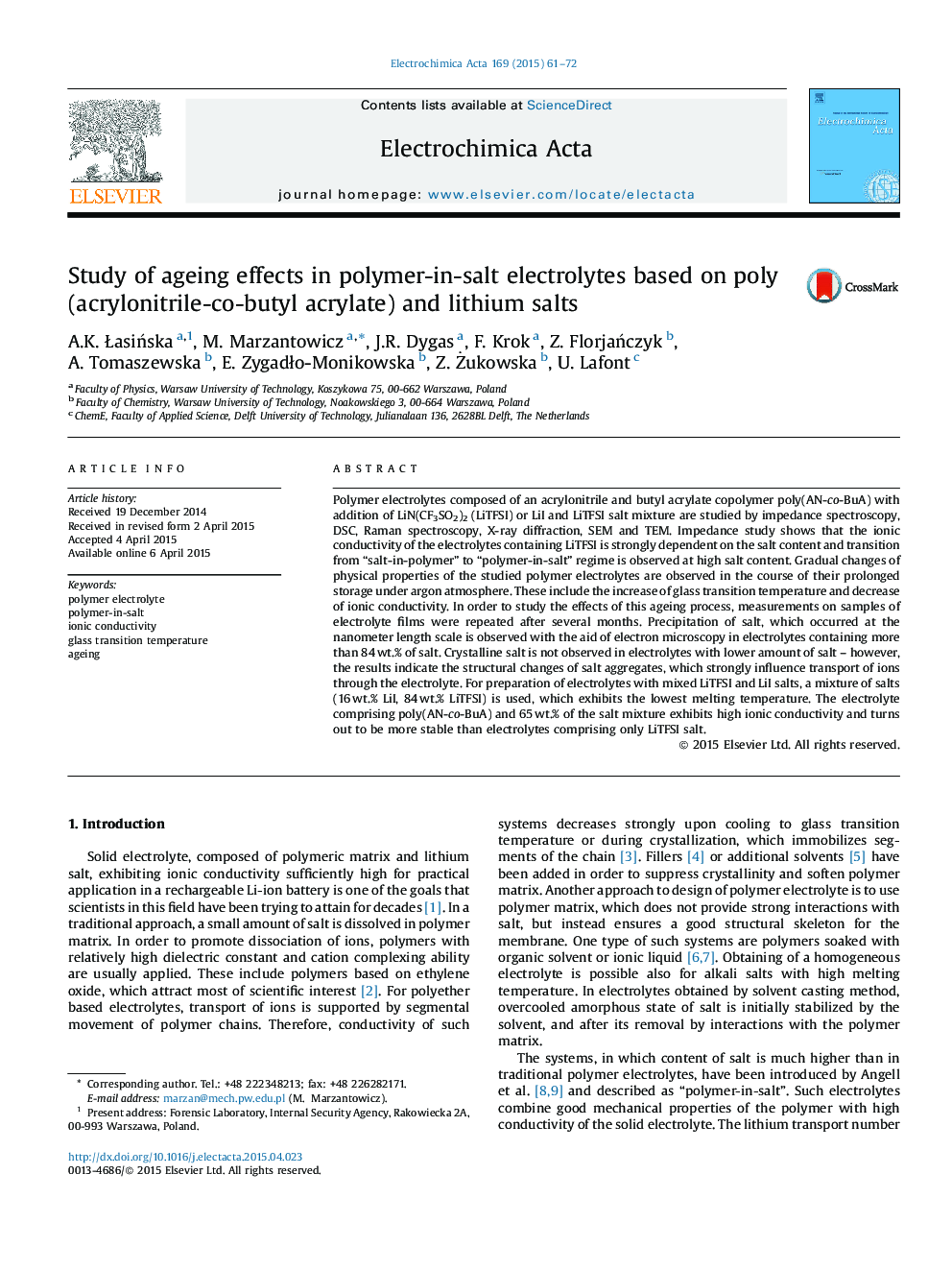| Article ID | Journal | Published Year | Pages | File Type |
|---|---|---|---|---|
| 184095 | Electrochimica Acta | 2015 | 12 Pages |
•Properties of freshly cast and aged poly(AN-co-BuA) – LiTFSI electrolytes are studied.•For fresh electrolytes, conductivity increases and Tg decreases with increasing salt content.•Ageing of polymer-in-salt electrolytes results in a drop of conductivity and a rise of Tg.•Ageing effects can be explained by changes of properties of amorphous salt domains.•Precipitation of salt is observed in electrolytes containing over 84 wt.% of LiTFSI.•Electrolytes with mixture of LiI and LiTFSI are more stable than those with LiTFSI only.
Polymer electrolytes composed of an acrylonitrile and butyl acrylate copolymer poly(AN-co-BuA) with addition of LiN(CF3SO2)2 (LiTFSI) or LiI and LiTFSI salt mixture are studied by impedance spectroscopy, DSC, Raman spectroscopy, X-ray diffraction, SEM and TEM. Impedance study shows that the ionic conductivity of the electrolytes containing LiTFSI is strongly dependent on the salt content and transition from “salt-in-polymer” to “polymer-in-salt” regime is observed at high salt content. Gradual changes of physical properties of the studied polymer electrolytes are observed in the course of their prolonged storage under argon atmosphere. These include the increase of glass transition temperature and decrease of ionic conductivity. In order to study the effects of this ageing process, measurements on samples of electrolyte films were repeated after several months. Precipitation of salt, which occurred at the nanometer length scale is observed with the aid of electron microscopy in electrolytes containing more than 84 wt.% of salt. Crystalline salt is not observed in electrolytes with lower amount of salt – however, the results indicate the structural changes of salt aggregates, which strongly influence transport of ions through the electrolyte. For preparation of electrolytes with mixed LiTFSI and LiI salts, a mixture of salts (16 wt.% LiI, 84 wt.% LiTFSI) is used, which exhibits the lowest melting temperature. The electrolyte comprising poly(AN-co-BuA) and 65 wt.% of the salt mixture exhibits high ionic conductivity and turns out to be more stable than electrolytes comprising only LiTFSI salt.
